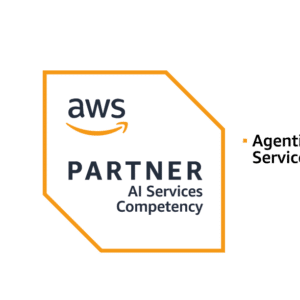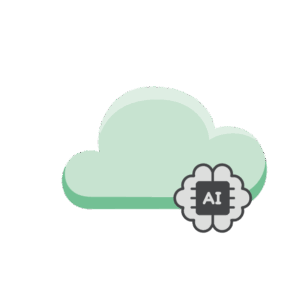
Organizations aiming for the benefits of cloud computing, like cost savings and agility, encounter numerous challenges during migration. These issues span from technical complexities and security concerns to operational hurdles and organizational readiness. It’s vital to grasp these obstacles for a successful cloud transition. But, are you fully aware of these challenges and how to overcome them?
Key Takeaways
- Navigating technical complexities, including data security, application compatibility, and network performance impacts
- Addressing operational challenges such as service disruption risks and vendor lock-in considerations
- Managing cost management complexities and ensuring scalability in the cloud
- Overcoming the skills gap and driving effective change management within the organization
- Ensuring regulatory compliance and mitigating risks throughout the migration process
Understanding the Complexities of Cloud Migration
Migrating data and applications to the cloud is a complex endeavor, filled with numerous challenges. Organizations face hurdles such as data security and privacy concerns, as well as compatibility issues with legacy systems. A deep understanding and a strategic approach are essential for a successful cloud migration.
Data Security and Privacy Concerns
When moving data to the cloud, organizations must address significant data security and privacy issues. Cloud environments can expose data to new vulnerabilities, making robust security measures paramount. It’s crucial to comply with privacy laws and regulations, such as GDPR, CCPA, and HIPAA, while securing data effectively.
Legacy System Compatibility Issues
Legacy data may not be optimized for cloud systems, posing challenges in applying data governance policies. Moreover, legacy systems might not integrate well with cloud environments, risking data loss or corruption during migration. Overcoming these compatibility issues is vital for a smooth transition and data integrity.
- Ensuring data security and privacy in the cloud environment
- Navigating compliance with regulations like GDPR, CCPA, and HIPAA
- Optimizing legacy data structures for cloud-based systems
- Overcoming compatibility issues between legacy systems and cloud infrastructure
Navigating the Operational Challenges
Organizations venturing into cloud migration face numerous operational hurdles. A major concern is the risk of service disruption during the transition. Ensuring business continuity is crucial, as downtime can severely impact finances and reputation.
To reduce the risk of service disruption, a detailed and well-executed migration strategy is essential. This entails thorough planning, extensive testing, and a solid backup and disaster recovery plan. By focusing on business continuity, organizations can lessen the migration’s impact on daily operations.
Service Disruption Risks
Cloud migration poses a significant challenge in the form of service disruption. This can stem from data migration issues, compatibility with legacy systems, or unexpected performance issues. It’s vital for organizations to prepare for these risks and have a contingency plan to ensure a smooth transition.
- Thorough planning and testing to pinpoint and fix potential failures
- Implementing robust backup and disaster recovery strategies to protect critical data and applications
- Keeping stakeholders and end-users informed to manage expectations and reduce disruptions
- Monitoring the migration closely and being prepared to address any issues swiftly
Vendor Lock-In Considerations
The risk of vendor lock-in, where an organization relies too heavily on a single cloud provider, is another major challenge. This can make switching providers difficult and costly in the future. To avoid this, organizations must thoughtfully evaluate their cloud migration strategy and consider the long-term implications of their provider choice.
| Factors to Consider | Potential Impact |
|---|---|
| Proprietary technologies and data formats | Increased difficulty in migrating to a different cloud provider |
| Contractual obligations and lock-in periods | Financial and operational constraints in switching providers |
| Compatibility with existing systems and applications | Integration challenges and potential data loss or corruption |
| Availability of alternative cloud provider options | Limited flexibility and negotiating power with the selected provider |
By evaluating these factors and adopting a multi-cloud or hybrid cloud strategy, organizations can reduce the risks of vendor lock-in. This approach ensures greater control over their cloud infrastructure and data.
Cloud Migration Challenges
Cloud migration presents numerous benefits but also significant challenges. Organizations must navigate these complexities to ensure a successful transition. Data security, compliance, cost management, and scalability are key areas to consider.
Ensuring data security and privacy is crucial during migration. Compliance with industry standards is also essential. Legacy systems’ compatibility with the cloud environment requires thorough planning and testing.
Service disruption risks and vendor lock-in are major concerns. Managing costs effectively is vital. This includes estimating upfront and ongoing expenses.
Scalability and performance are critical. Organizations must ensure their cloud infrastructure can adapt to changing demands and maintain performance levels. The skills gap within the organization and effective change management strategies are also significant hurdles.
Successful cloud migration requires careful planning, rigorous testing, and a focus on data integrity. Organizations must commit necessary resources and align their long-term strategy with the migration. This ensures the desired benefits are achieved.
By addressing these challenges proactively, organizations can navigate the complexities of migration effectively. This unlocks the full potential of cloud computing.
Cost Management and Scalability Concerns
Organizations moving workloads to the cloud for easier data access may encounter unexpected cost management challenges. Cloud services can be more cost-effective over time, but the initial migration can be costly. A Forbes report highlights that one-third of cloud migrations fail, and only about a quarter meet their deadlines.
Effective cost management is crucial to prevent overspending on cloud services. Costs like object storage, data transfer, networking, and computing resources can escalate quickly. Many organizations lack visibility into their cloud spending, making it hard to optimize costs.
Forecasting cloud expenses is complex, given the variety of cloud resources and ever-changing roadmaps. An inaccurate budget can significantly affect cloud cost management, leading to financial surprises. Using cloud cost management tools for a comprehensive view of costs can help organizations control spending and optimize their cloud investments.
Scalability is another key concern during cloud migration. It’s vital to select the right cloud service that matches the organization’s needs and growth plans. The AWS Well-Architected Framework aids in building secure, reliable, and scalable workloads, preventing issues that could affect performance and scalability.
Resistance to cloud adoption and the complexity of integrating legacy systems into modern cloud environments are significant hurdles. Service disruptions during migration can result in financial losses and customer dissatisfaction, underscoring the need for thorough planning and execution.
| Key Challenges | Potential Impact |
|---|---|
| Lack of visibility into cloud spending | Overspending and missed opportunities for cost optimization |
| Difficulty in accurately forecasting cloud expenditure | Unexpected financial surprises and budget overruns |
| Choosing the right cloud service to meet scalability needs | Potential performance issues and inability to accommodate future growth |
| Integration of legacy systems into the cloud environment | Service disruptions, compatibility challenges, and security vulnerabilities |
By addressing these challenges, organizations can ensure a successful and cost-effective cloud migration. This approach maximizes the benefits of cloud computing while minimizing financial and operational risks.
Overcoming the Skills Gap and Change Management
Migrating to the cloud demands a shift in mindset, processes, and technology within an organization. The skills gap is a major challenge, as teams may lack the expertise to manage cloud infrastructure and services well.
To bridge this gap, organizations must invest in training and upskilling their workforce. This can mean sending employees to cloud-specific certification programs, enrolling them in online courses, or providing hands-on workshops. Sometimes, hiring new talent with cloud expertise is also necessary to support the existing team.
Change management is equally vital during cloud migration. Moving to a cloud-based environment is a big change for any organization, often meeting resistance from within. Effective strategies are key to a smooth transition and gaining support from stakeholders.
- Clearly communicate the benefits of cloud migration to employees, focusing on how it can improve productivity, cut costs, and enhance business agility.
- Involve key stakeholders in the decision-making process to foster a sense of ownership and commitment to the transition.
- Provide comprehensive training and support to employees to help them adapt to new cloud-based tools and workflows.
- Establish a dedicated change management team to oversee the transition and address any concerns or resistance that may arise.
By tackling the skills gap and implementing strong change management strategies, organizations can ensure a successful cloud migration. This approach ensures the smooth integration of cloud technology and the realization of its full potential.
Conclusion
Cloud migration presents unique challenges, yet, understanding and tackling these hurdles is vital for organizations aiming to harness the cloud migration benefits. Developing a thorough cloud migration best practices framework is essential. This includes ensuring data governance, security, and compliance. It also involves optimizing costs and scalability, and bridging the skills gap and change management gaps. This approach enables us to effectively navigate the cloud migration journey and fully capitalize on our cloud investments.
Putting a strong emphasis on data security and compliance safeguards sensitive data while leveraging cloud platforms’ agility and scalability. Moreover, strategic cost optimization and wise resource allocation support a sustainable cloud strategy. This, in turn, fosters organizational transformation and enhances operational efficiency.
As cloud technology becomes more prevalent, staying ahead and mastering cloud migration intricacies is crucial for businesses to stay competitive and adaptable to market shifts. Adopting a proactive and strategic stance allows organizations to fully exploit the cloud’s potential. This positions them for enduring success in the digital landscape.
For businesses aiming to harness the full potential of Amazon Q and revolutionize their AI and data analysis strategies, DinoCloud is here to support you. Our team of AWS and AI experts can guide you through the entire process, ensuring you maximize the value of your data and AI capabilities. Discover more about how DinoCloud can transform your AI-driven journey here!
FAQ
What are the top cloud migration challenges businesses face?
Businesses encounter several hurdles in cloud migration, including concerns over data security and privacy. They also face issues with legacy system compatibility and the risks of service disruptions. Other challenges include vendor lock-in, managing costs, and ensuring scalability and performance. Compliance with regulations, skills gaps, and effective change management add to the complexity.
How can organizations ensure data security and privacy during cloud migration?
Ensuring data security and privacy in cloud migration requires robust security measures. Adhering to privacy laws and regulations, such as GDPR, CCPA, or HIPAA, is essential. Optimizing data governance policies for cloud environments is also crucial. Thorough planning and execution help mitigate data vulnerabilities.
What are the challenges associated with legacy system integration during cloud migration?
Integrating legacy systems with the cloud can be challenging due to compatibility issues. This may lead to data loss or corruption during migration. Moreover, the structure of legacy data might not align with cloud systems, making governance policies difficult to apply effectively.
How can organizations minimize service disruption during cloud migration?
To ensure minimal disruption during migration, a well-planned and executed strategy is vital. Developing a comprehensive migration plan is key. Utilizing cloud provider tools and services, and closely monitoring the migration process, helps to reduce downtime.
What are the considerations around vendor lock-in when choosing a cloud provider?
Selecting a cloud provider requires awareness of the vendor lock-in risk. This occurs when a customer becomes overly dependent on a provider, making it hard and costly to switch later. Evaluating provider offerings and exit strategies is essential to avoid this situation.
How can organizations manage the costs associated with cloud migration?
Cloud migration can be costly initially, but it can be more cost-effective in the long term. Monitoring and managing ongoing cloud costs is crucial. Ensuring the chosen solution can handle data volumes and processing needs is vital. Optimizing resource utilization helps avoid escalating costs.
How can organizations address the skills gap and change management challenges during cloud migration?
Cloud migration demands specialized skills, which may require training or hiring new staff. Managing cloud infrastructure and services effectively is essential. Additionally, cloud migration is a significant change. Developing effective change management strategies ensures a smooth transition and addresses resistance within the organization.



